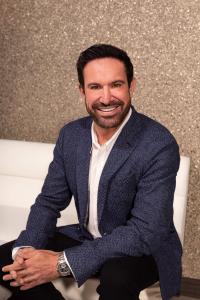LabFinder CEO Dr. Robert Segal Offers Tips on Lowering Medical Costs, Says Using eHealth Reduces ‘Wasteful’ Care
— Dr. Robert Segal
NEW YORK, NY, UNITED STATES, April 18, 2023/EINPresswire.com/ — Electronic health information exchanges and digital software platforms are proving effective avenues for enhancing communication between doctors and patients and reducing what experts call “wasteful” medical care, including orders for unnecessary medical tests, says Robert Segal, MD, co-founder and CEO of LabFinder.
Indeed, the National Academy of Medicine has estimated more than $210 billion is expended annually on “ordering and performing tests and procedures that are either irrelevant or unnecessary,” according to an article posted on the prognocis.com website. “Such waste of resources and patient dollars, as well as a lack of price and cost transparency in laboratory and radiology testing, are what prompted me to develop LabFinder,” says Dr. Segal, a renowned cardiologist.
LabFinder serves as an online, “eHealth” scheduling platform for all patient laboratory and radiology appointments. The platform “helps connect patients, doctors, and lab and radiology centers for a more seamless medical experience” and timely scheduling. At the same time, LabFinder provides “one central repository for users’ testing results. Results are stored and shared in one convenient portal [and are often available in 24-48 hours], allowing patients to be more empowered with their health and medical decisions,” according to an Internet description of the system.
Digital platforms like LabFinder offer clinicians readily available information to which they can refer before writing patient orders for medical tests. Allowing clinicians to indicate whether proposed tests are duplicative for a patient or offer results similar to what has already been obtained through prior testing, Dr. Segal says. “These electronic exchanges also give patients pricing information, allowing them to shop around for the most cost-effective testing services at high-quality laboratories and radiology centers.”
In a 2019 report from the Health Care Cost Institute (http://bitly.ws//BI5b), investigators found that the same testing services – sometimes in the same or similar metro regions – can vary by as much as 25-39 times.
Dr. Segal is certainly not alone in his concerns about testing charges. As reported in Forbes (http://bitly.ws/BHXS) magazine, results of a national poll published in 2018 by the West Health Institute/NORC at the University of Chicago determined that 40 percent of Americans either skipped a treatment or avoided a medical test because of cost.
“Unfortunately, such depressing numbers have not changed much in more recent years,” Dr. Segal says. According to healthsystemtracker.org, National Health Interview Survey data collected through 2021 shows four in 10 adults reporting either they or a household family member delayed medical testing or care due to cost.
Of course, delays in providing patients with timely access to health care is not simply a matter of dollars and cents, Dr. Segal states. He cites a 2018 study in the journal Diagnosis (http://bitly.ws/BI5Z) in which authors write: “Inappropriate use of laboratory resources, due to excessive number of tests not really necessary for patient care or by failure to order the appropriate diagnostic test, may lead to wrong, missed or delayed diagnosis, thus potentially jeopardizing patient safety. It is estimated that five percent to 95 percent of tests are currently used inappropriately, depending on the appropriateness criteria, thus significantly contributing to the potential of generating medical errors, the third leading cause of death in the United States.”
The author of an Institute of Medicine commentary (http://bitly.ws/B12e) on the physician-sponsored choosingwisely.org website states that doctors’ “ethical and professional responsibility” is to ensure “patients [receive] only the care that is needed and provides benefits. But often physicians say they have difficulty saying ‘no’ to patients’ requests for tests and treatments.”
“Patients make these requests because they are uninformed and feel left out of decisions involving their care. Ongoing development of secure, digital platforms like LabFinder, which provide patients ready access to their clinical information, will help make patients feel more involved in the recommendations and advice of their clinicians,” Dr. Segal indicates.
“Information technology (IT) platforms are highly functional, flexible, and secure and offer limitless data storage for physicians and patients alike,” Dr. Segal adds. “These technologies also encourage networking, information sharing, communication, and use of increasingly innovative apps – all of which can help cut patients’ medical costs.”
For patients struggling with costs of diagnostic testing, Dr. Segal offers this advice:
• Carefully consider the site where testing is done. Is a physician’s recommendation for an in-office ultrasound exam less expensive than one performed at a nearby, high-volume center? Changing testing locations can sometimes result in significant savings.
• If your physician orders a test, question it. Determine its purpose and the type of data that the test will provide. Is it vital information or simply something that would be “nice to have?” Would another, perhaps less-expensive test return similar information? Become an engaged patient.
• Make the most of your health insurance deductible. If you already have paid out your maximum for the year, squeeze in the additional needed tests before year’s end so that insurance fully covers them (http://bitly.ws/BK4w).
• Use “eHealth” platforms to find the highest quality, but least expensive testing centers. A study published in Health Affairs determined “patients are more vigilant custodians of cost than their doctors,” according to a New York Times article about the study (http://bitly.ws/BK5H), and smarter than to believe higher prices simply mean better quality.
Bio: Robert Segal MD, board-certified in cardiovascular disease, echocardiography, and nuclear cardiology. He is founder of Manhattan Cardiology and Medical Offices of Manhattan, and Co-Founder of LabFinder. https://www.labfinder.com/
About: LabFinder is a consumer-facing platform that transforms the patient experience through seamless lab & radiology testing, guiding patients to conveniently located testing centers, handling appointment bookings, offering telehealth services, and allowing patients to review their test results all in one place. LabFinder supports patients through their care journey from booking to billing—reducing expenses, hurdles, and frustrations. www.labfinder.com.
Contact:
www.mcprpublicrelations.com
Melissa Chefec
MCPR, LLC
+1 203-968-6625
email us here
![]()
Originally published at https://www.einpresswire.com/article/627948568/to-cut-medical-test-costs-be-engaged-and-go-electronic
The post To Cut Medical Test Costs, Be Engaged and Go Electronic first appeared on Beauty Ring Magazine.
Beauty - Beauty Ring Magazine originally published at Beauty - Beauty Ring Magazine




